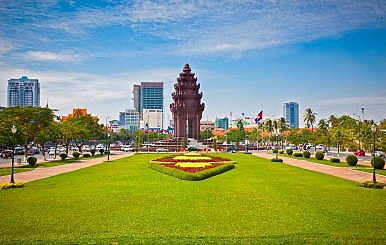
Phnom Penh is a city on the move, and nearly unrecognizable compared to how it was just a decade or two in the past. Dubbed the Pearl of Asia, Cambodia’s capital city was once known for its iconic French colonial architecture and broad, tree-lined boulevards. Today the trees are mostly gone, and Phnom Penh is dotted with decrepit French colonial buildings shadowed by shiny new high rises. Now home to international brands, a plethora of new restaurants, and a host of imported goods and products, the city is a magnet for Cambodians from the provinces looking for new opportunities, and for expats from around the world who are searching for the very same thing.
Whether you’re in town for a weekend or a year, we’ve got the low-down on everything you need to know about Phnom Penh, from restaurants, hotels, and nightlife to supermarkets, gyms, and schools.
Over the past few years, the city has undergone tremendous changes – businesses are springing up constantly and tourism is once again booming. Cambodia has one of the most liberal investment laws to further boost managed to retain its charm and character – cyclos that weave through traffic with ease, broad boulevards, old colonial buildings, parks and green spaces that reminds one of the country’s French heritage, and above all its people who always have a smile for you.
A stone’s throw away from the Tonle Sap is the royal Palace built on the site of the Banteay Kev, a citadel built in 1813. The Palace grounds contain several buildings: the Throne Room of Prasat Tevea Vinichhay which is used for the coronation of kings, official receptions and traditional ceremonies; the Chan Chhaya Pavilion which is a venue for dance performances; the king’s official residence called the Khemarin; the Napoleon Pavilion and the spectacular Silver Pagoda. This pagoda is worth exploring. It owes its name to the 5,000 silver tiles weighing 1kg each which cover the entire floor.

